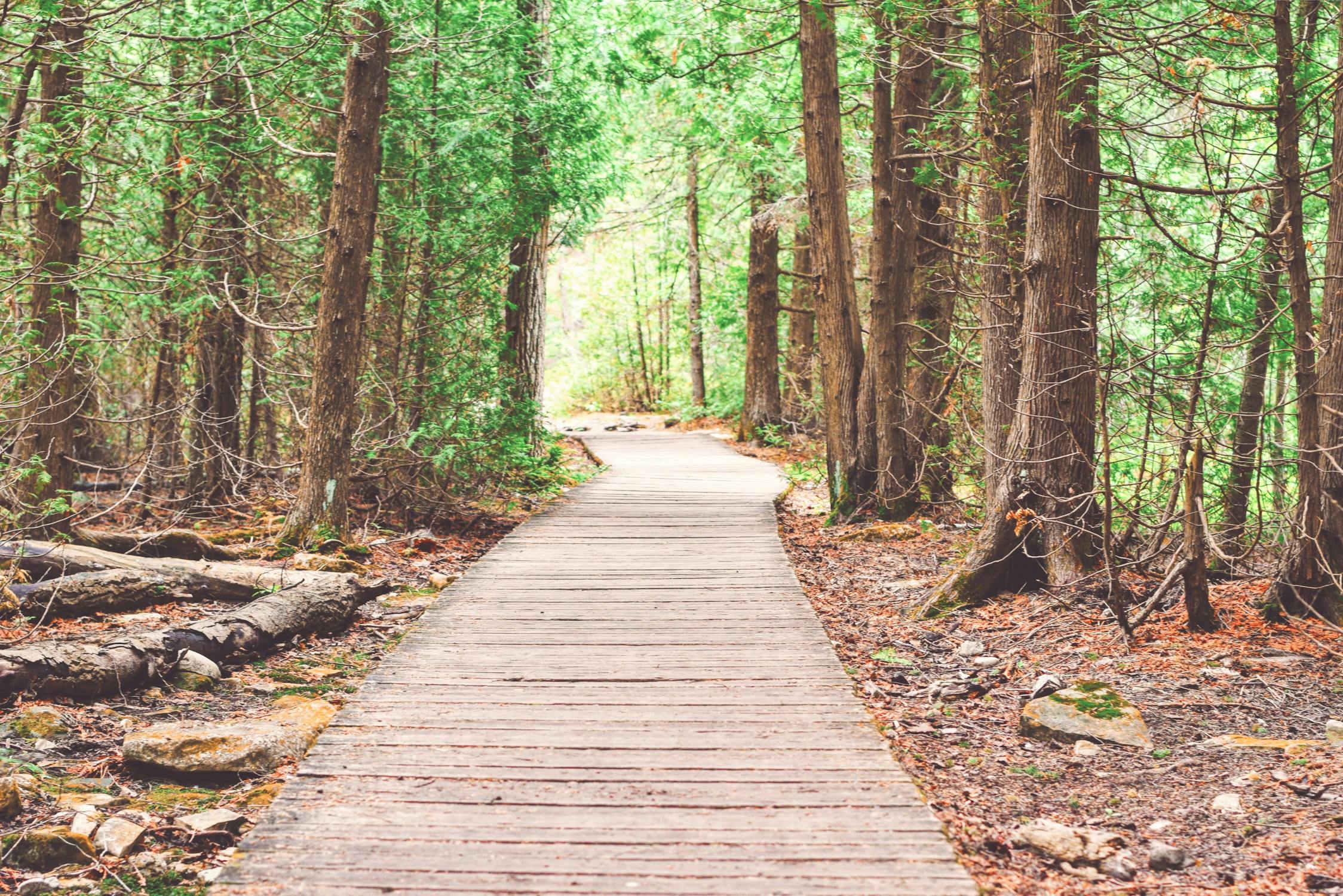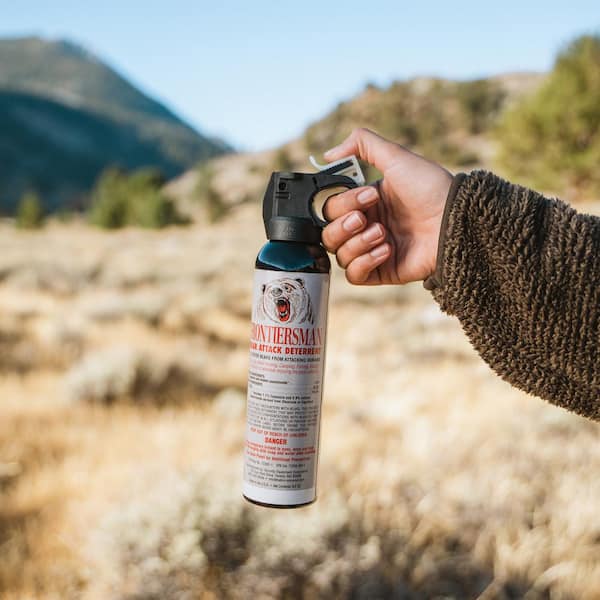Embark on Epic Adventures: Top 5 Tips for Solo Hiking

In a world filled with bustling cities and constant connectivity, there's a yearning in our souls for adventure and the call of the great outdoors. There's no better way to answer that call than embarking on a solo hiking expedition. The thrill of hiking to the edge of a rugged mountain trail, the crisp scent of fresh air, and the picturesque landscapes surrounding you are all amplified tenfold when you conquer it on your own.Solo hiking is a transcendent journey of self-discovery, an opportunity to wander off the beaten path, and a chance to reconnect with nature in its purest form.
As fun and adventurous as the solo lifestyle, it can also be equally dangerous. Hiking alone can leave you exposed to numerous situations. It can also become difficult to hike back in case of an injury which is why it is imperative to be prepared to face any unforeseen circumstances. While embarking on a solo hike, preparing a checklist and referring to it multiple times can help ensure you don’t miss on any of the essentials. In case you don’t know what the hiking essentials are- be sure to read our blog on the Top 10 Hiking Essentials before you proceed.
Hiking Etiquettes
If you are a relatively new hiker, or even an experienced one, you should always remember to follow hiking etiquettes. One of the most important hiking etiquette is Leave No Trace which follows these important tenets-
- Plan Ahead and Prepare: Thoroughly research your hiking destination, assess weather conditions, and understand local regulations to ensure a smooth, responsible journey.
- Travel and Camp on Durable Surfaces: Stick to established trails and campsites to minimize your environmental impact, preserving delicate ecosystems.
- Dispose of Waste Properly: Pack out everything you bring, including trash, food scraps, and hygiene products. Use designated waste disposal facilities or carry waste bags.
- Leave What You Find: Avoid picking plants, disturbing wildlife, or altering natural features. Leave nature untouched for future generations.
- Minimize Campfire Impact: Use a camp stove for cooking instead of open fires, reducing the risk of wildfires and preserving the landscape.
- Respect Wildlife: Observe animals from a safe distance, never feed them, and keep your food securely stored to avoid attracting them to your campsite.
- Be Considerate of Other Visitors: Keep noise levels down, yield the trail to others, and maintain a friendly and respectful attitude towards fellow hikers, ensuring everyone's enjoyment of the outdoors.
Now that we have covered the basics, let’s dive in to the Top 5 Tips For Solo Hiking:
1.Popular v/s Non-popular trail
Choosing well-marked trails is a fundamental and smart strategy when embarking on a hiking adventure. These clearly defined paths not only enhance your safety but also contribute to a more enjoyable and stress-free hiking experience.
Well-marked/popular trails provide a sense of security and reassurance, especially for novice hikers. Clear signage, trail markers, and properly maintained paths reduce the risk of getting lost or straying off-course. This can be a significant relief, especially when you're exploring unfamiliar terrain or hiking alone. Furthermore, the chance of running into another group of hikers can also further increase the sense of safety. In case of emergencies or injuries, staying calm and sticking to well-marked trails will increase the chances of you receiving help as quickly as possible.
Additionally, well-marked trails often come with useful information boards and maps at trailheads, helping you plan your journey effectively. These resources offer insights into the trail's difficulty level, estimated time, and any potential hazards you might encounter along the way.
Choosing popular trails supports the preservation of natural landscapes and reduces your impact on the natural ecosystem. By sticking to designated paths, you minimize the environmental impact caused by off-trail hiking, helping to safeguard delicate ecosystems and native wildlife.
Popular trails often lead to captivating destinations, such as stunning viewpoints, serene lakes, or historic sites. You can make the most of your hiking experience by focusing on the scenery and attractions, rather than worrying about navigation. Of course sometimes steering off the main path can also help you discover stunning locations, but the chances of you getting injured might increase. Sticking to the main trail should always be the focus.

2. Food & Clothing
Always ensure that you have plenty of warm and preferably water resistant clothes when you embark on your solo hike. Having access to clean drinking water and food can make you go further and enjoy your hike. Carrying food that can be cooked easily will help reduce the stress of setting up an entire campsite just to get a quick bite in.
While carrying plenty of clean drinking water is recommended, there is only a finite amount of it you can carry, so make sure you utilise it properly. Carrying water in a hydration bag helps you conserve your water resource by letting you sip on the water slowly. In case you are planning on hiking for several hours or days, it is recommended that you also carry a portable water filtration device, like tablets or clothes to filter unclean water through.
Hiking in the wilderness can also leave you vulnerable to the climate and nights tend typically tend to get pretty cold. Carrying any extent of warm clothing will drastically make a difference and will help instill the confidence of braving the harsh and unexpected weather changes.

Giro Water and Windproof jacket.
3. Information is Key
Being informed and keeping someone informed is always important. Before you embark on your solo hike, inform someone you trust about the trip that you are taking the routes that you will choose. In case of emergencies it can be really helpful to know about a person’s closest whereabouts. This will allow help to reach you quickly.
Investing in devices like a gps or even an Airtag will be incredibly helpful. Allowing people to have access to your location can be a great way to discover/ping your location should the need ever arise. While hiking alone is definitely fun, taking the right steps and ensuring that someone is informed about your whereabouts can go a long way in ensuring you have an enjoyable trip.

4. Plan Ahead
Before embarking on your journey, take a few minutes to pause and plan ahead. Planning ahead is the foundational pillar of any successful hiking adventure, kind of like charting a course before embarking on a thrilling journey. It's the compass that guides you through the intricacies of preparation and the roadmap to ensuring a safe and enjoyable expedition.
Think of yourself as an avid adventurer, equipped with knowledge about your destination, the terrain, and the environmental conditions. Research your chosen hiking spot meticulously, delving into trail maps, weather forecasts, and any local regulations or permits required. Consider factors like elevation gain, trail difficulty, and the estimated duration of your hike. This foresight not only ensures you're well-informed but also helps you select a trail that aligns with your skill level and preferences. Often joining local groups/communities around the places you want to visit will also help you get a bit of local knowledge that can prove to be useful.
Planning ahead allows you to anticipate potential challenges and pack accordingly. Visualize the gear you'll need, from sturdy hiking boots to weather-appropriate clothing and essential safety equipment like a first-aid kit, map, and compass. Preparing a comprehensive checklist ensures you don't overlook any crucial items, eliminating the risk of discomfort or unforeseen emergencies on the trail.
5. Safety tools
Exploring the great outdoors on a solo hiking expedition is like embarking on a thrilling quest, but nature can throw unexpected challenges our way. To outmanoeuvre the wild with confidence, consider carrying some safety tools with you.
The possibility of a wildlife encounter is incredibly high when you go out exploring the wilderness, but can also increase when traveling alone. Animals tend to avoid large groups but in the case of a solo hike that is not an option. Fear not, for here's where your arsenal of safety gear comes into play. Bear bells are a discreet yet effective alarm system that notifies animals of your presence, reducing the chances of an unexpected meeting. Additionally, carrying a bear spray, mace, or even an airhorn to deter potential threats. Nature often respects those who stand their ground, so making noise and appearing larger can be your first line of defense.

Bear Spray- Picture courtesy : Home Depot
But safety tools are not just about keeping wildlife at bay; they're versatile companions for any solo explorer. A fire starter can come in clutch in many situations such as cooking a quick meal or beating the bone chilling winds of the night. Coupling this with a Swiss army knife, a versatile multitool that can turn a fallen branch into a useful implement or even serve as a form of self-defense, can help instill a new level of confidence and make you feel better prepared.
In the world of outdoor exploration, being prepared is paramount in ensuring a safe and fun trip. By arming yourself with some safety tools, you're ready to carve out your own path in your next solo hike.
Bonus Tip: Awareness Is Key
Being aware of your surroundings and acting responsibly will help avoid the chance of injuries. Always look for telltale signs if a route is accessible or not. Avoid taking risky routes, especially when you’re on your own.
Imagine navigating a challenging hiking trail, surrounded by the serene beauty of nature. Amidst this picturesque landscape, it's crucial to be mindful of your actions and avoid unnecessary risks that could turn your adventure into a misadventure.
The chances of you coming across a series of formidable rocks or a set of slimy logs blocking your path are pretty high if you choose to travel less popular or difficult trails. The temptation to leap over them or attempt a daring climb might arise. However, it's essential to exercise caution. Jumping over rocks can result in sprained ankles or worse, while climbing slippery logs might lead to falls and injuries.
The key is to prioritize safety. Instead of risking your well-being, take a step back and assess your options. Is there an alternative path or a safer way to traverse these obstacles? Your journey should be an exploration, not a gamble with your safety.
Remember, a successful hiking adventure isn't about taking unnecessary risks but rather about embracing the wonders of nature while ensuring your safety throughout the journey.
Conclusion
In conclusion, embarking on a solo hiking adventure is a thrilling and transformative experience, but it comes with responsibilities. To ensure a safe and memorable journey, prioritize planning, carry essential gear, and exercise caution on the trail. Respect nature, follow the tenets of the Leave No Trace principle, and always be prepared for unexpected challenges. Remember, every step on the trail is an opportunity for self-discovery and connection with the great outdoors. By embracing these tips and principles, you'll not only elevate your hiking experience but also leave a positive mark on the environment for future generations of adventurers to cherish. So, lace up your hiking boots, venture forth, and let nature's wonders guide your way.
